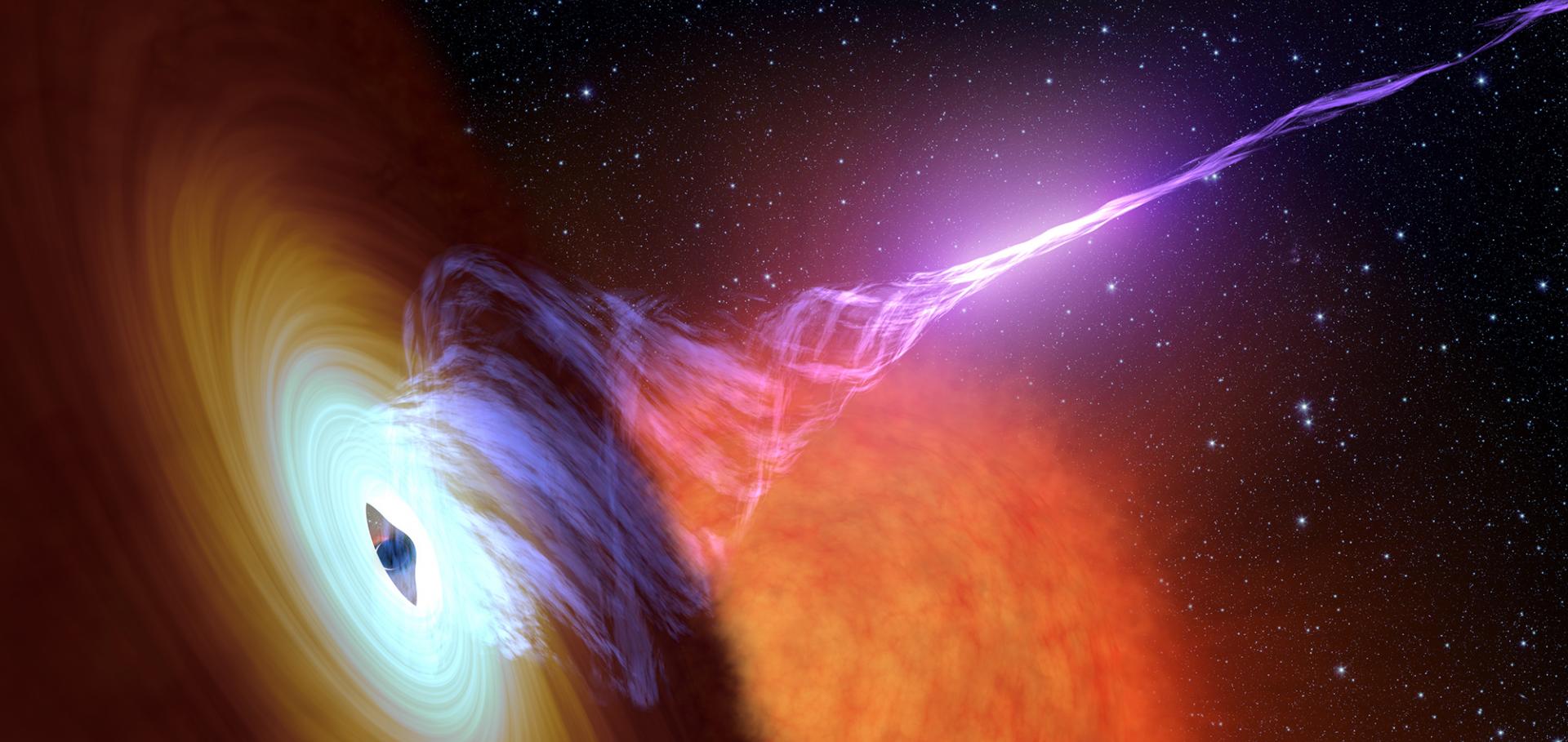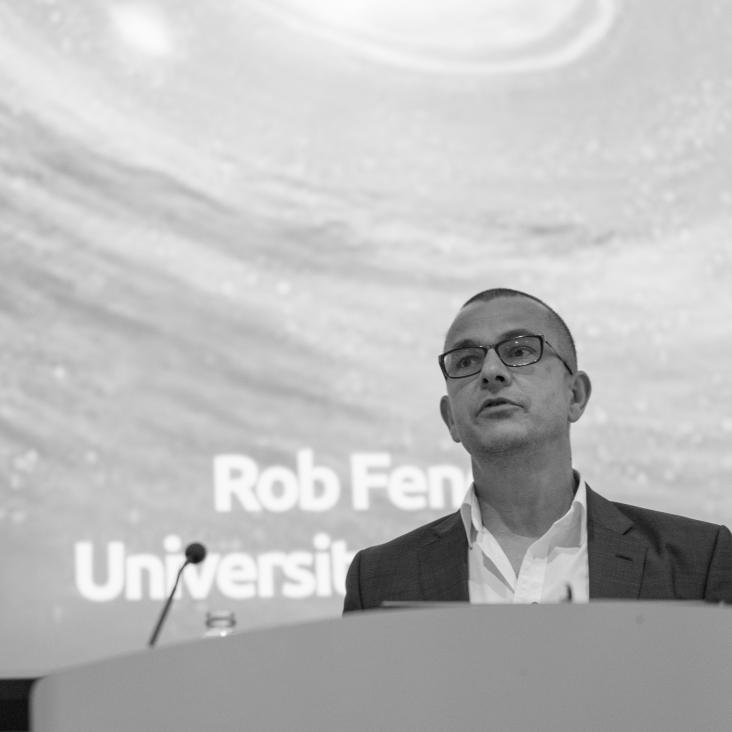Polarized infrared emission from X-ray binary jets
Monthly Notices of the Royal Astronomical Society 387:2 (2008) 713-723
Abstract:
Near-infrared (NIR) and optical polarimetric observations of a selection of X-ray binaries are presented. The targets were observed using the Very Large Telescope and the United Kingdom Infrared Telescope. We detect a significant level (3σ) of linear polarization in four sources. The polarization is found to be intrinsic (at the >3σ level) in two sources; GRO J1655-40 (∼4-7 per cent in the H and Ks bands during an outburst) and Sco X-1 (∼0.1-0.9 per cent in the H and K bands), which is stronger at lower frequencies. This is likely to be the signature of optically thin synchrotron emission from the collimated jets in these systems, whose presence indicates that a partially ordered magnetic field is present at the inner regions of the jets. In Sco X-1, the intrinsic polarization is variable (and sometimes absent) in the H and K bands. In the J band (i.e. at higher frequencies), the polarization is not significantly variable and is consistent with an interstellar origin. The optical light from GX 339-4 is also polarized, but at a level and position angle consistent with scattering by interstellar dust. The other polarized source is SS 433, which has a low level (0.5-0.8 per cent) of J-band polarization, likely due to local scattering. The NIR counterparts of GRO J0422+32, XTE J1118+480, 4U 0614+09 and Aql X-1 (which were all in or near quiescence) have a linear polarization level of <16 per cent (3σ upper limit, some are <6 per cent). We discuss how such observations may be used to constrain the ordering of the magnetic field close to the base of the jet in such systems. © 2008 The Authors.Studying the X-ray hysteresis in GX 339-4: The disc and iron line over one decade
Monthly Notices of the Royal Astronomical Society 387:2 (2008) 545-563
Abstract:
We report on a comprehensive and consistent investigation into the X-ray emission from GX 339-4. All public observations in the 11 year RXTE archive were analysed. Three different types of model - single power law, broken power law and a disc + power law - were fitted to investigate the evolution of the disc, along with a fixed Gaussian component at 6.4 keV to investigate any iron line in the spectrum. We show that the relative variation in flux and X-ray colour between the two best sampled outbursts are very similar. The decay of the disc temperature during the outburst is clearly seen in the soft state. The expected decay is SDisc ∝ T4; we measure T 4.75±0.23. This implies that the inner disc radius is approximately constant in the soft state. We also show a significant anticorrelation between the iron line equivalent width (EW) and the X-ray flux in the soft state while in the hard state the EW is independent of the flux. This results in hysteresis in the relation between X-ray flux and both line flux and EW. To compare the X-ray binary outburst to the behaviour seen in active galactic nuclei (AGN), we construct a disc fraction luminosity diagram for GX 339-4, the first for an X-ray binary. The shape qualitatively matches that produced for AGN. Linking this with the radio emission from GX 339-4 the change in radio spectrum between the disc and power-law-dominated states is clearly visible. © 2008 The Authors.The disc-jet coupling in Aql X-1
International Conference Recent Advances in Natural Language Processing, RANLP (2008)
Abstract:
We present a multiwavelength analysis of the outbursts from the neutron star X-ray binary Aql X-1. We focus on three outbursts for which quasi-simultaneous data in radio, optical and Xray bands exist. We find evidence that the disc/jet coupling in Aql X-1 is similar to the one documented for black hole X-ray binaries, at least from the point of view of the general behaviour revealed during outbursts. © Copyright owned by the author(s) under the terms of the Creative Commons Attribution-NonCommercial-ShareAlike Licence.The disc-jet coupling in Aql X-1
International Conference Recent Advances in Natural Language Processing, RANLP (2008)
Abstract:
We present a multiwavelength analysis of the outbursts from the neutron star X-ray binary Aql X-1. We focus on three outbursts for which quasi-simultaneous data in radio, optical and Xray bands exist. We find evidence that the disc/jet coupling in Aql X-1 is similar to the one documented for black hole X-ray binaries, at least from the point of view of the general behaviour revealed during outbursts. © Copyright owned by the author(s) under the terms of the Creative Commons Attribution-NonCommercial-ShareAlike Licence.X-ray jets from the X-ray binary cir X-1
International Conference Recent Advances in Natural Language Processing, RANLP (2008)


